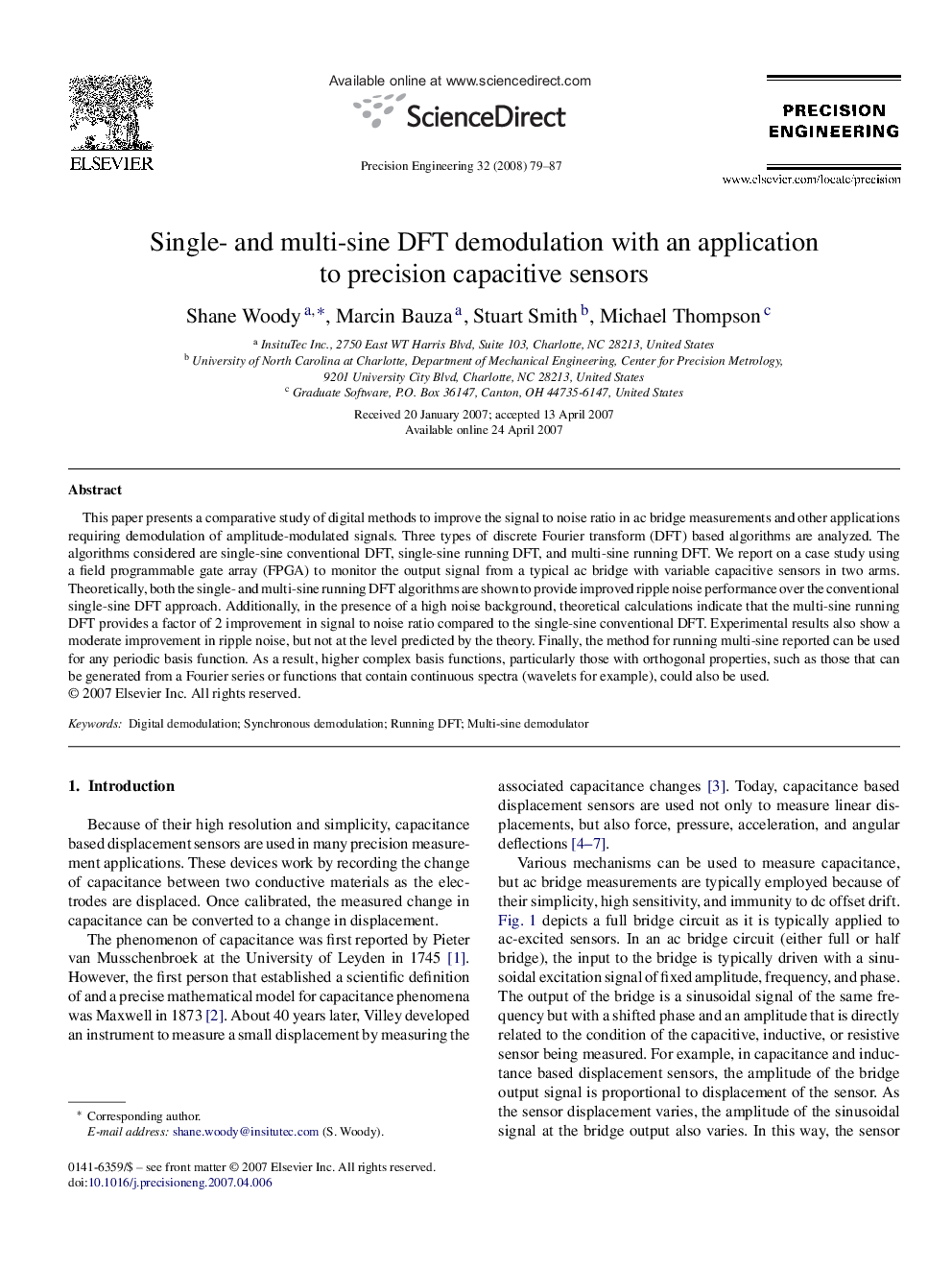| Article ID | Journal | Published Year | Pages | File Type |
|---|---|---|---|---|
| 804737 | Precision Engineering | 2008 | 9 Pages |
This paper presents a comparative study of digital methods to improve the signal to noise ratio in ac bridge measurements and other applications requiring demodulation of amplitude-modulated signals. Three types of discrete Fourier transform (DFT) based algorithms are analyzed. The algorithms considered are single-sine conventional DFT, single-sine running DFT, and multi-sine running DFT. We report on a case study using a field programmable gate array (FPGA) to monitor the output signal from a typical ac bridge with variable capacitive sensors in two arms. Theoretically, both the single- and multi-sine running DFT algorithms are shown to provide improved ripple noise performance over the conventional single-sine DFT approach. Additionally, in the presence of a high noise background, theoretical calculations indicate that the multi-sine running DFT provides a factor of 2 improvement in signal to noise ratio compared to the single-sine conventional DFT. Experimental results also show a moderate improvement in ripple noise, but not at the level predicted by the theory. Finally, the method for running multi-sine reported can be used for any periodic basis function. As a result, higher complex basis functions, particularly those with orthogonal properties, such as those that can be generated from a Fourier series or functions that contain continuous spectra (wavelets for example), could also be used.
